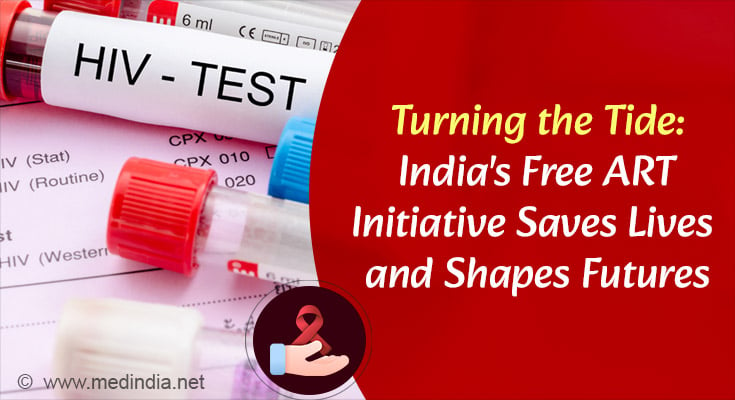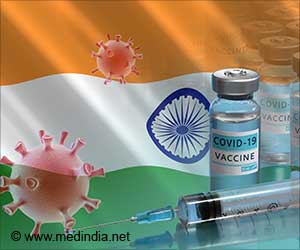- India’s free ART initiative, launched in 2004, marks a pivotal moment in the nation’s fight against HIV/AIDS
- Complementary initiatives and adaptability have been key to the success of India’s ART program, alongside political will and sustained funding
- Challenges persist, including delayed enrollment, patient adherence, and integrating HIV care with other health programs
Twenty years ago, on April 1, 2004, India took a monumental step in its fight against HIV/AIDS by launching Free Antiretroviral Therapy (ART) for Persons living with HIV (PLHIV). This decision marked a turning point in the nation’s public health history and has since become a beacon of success in the global battle against the epidemic (1✔ ✔Trusted Source
Twenty Years Of Antiretroviral Therapy For People Living With HIV: Global Costs, Health Achievements, Economic Benefits
).
In the early 1980s, when HIV/AIDS first emerged, it was viewed as a death sentence accompanied by fear, stigma, and discrimination. Despite the availability of antiretroviral drugs in high-income countries, access remained limited worldwide, especially in resource-constrained settings like India. However, the establishment of the Global Fund to Fight AIDS, Tuberculosis, and Malaria in 2002 and the subsequent launch of free ART in India in 2004 signaled a significant shift in the approach to HIV/AIDS management.
The provision of free ART addressed two critical barriers: cost and accessibility. Previously, the high cost of antiretroviral drugs made them unaffordable for most PLHIV, resulting in unnecessary suffering and death. Moreover, geographical barriers hindered access to treatment, particularly in rural and remote areas. By making ART free and widely available, India embarked on a path towards ensuring equitable access to life-saving treatment for all PLHIV.
Successes, Challenges, and Lessons Learned
Over the past two decades, the ART initiative in India has achieved remarkable success. The number of ART centers has expanded exponentially, reaching approximately 700 centers nationwide. As a result, around 1.8 million PLHIV are currently receiving free ART, contributing to a significant reduction in HIV prevalence and disease burden.
However, the success of India’s ART initiative cannot be attributed solely to the provision of free medication. A range of complementary initiatives, including free diagnostic facilities, prevention of parent-to-child transmission services, and management of opportunistic infections like tuberculosis, have played crucial roles in curbing the HIV epidemic. Furthermore, the program has demonstrated adaptability and responsiveness by evolving its treatment protocols over time, such as adopting early initiation of ART and a “Treat All” policy regardless of CD4 count.
Despite these achievements, challenges remain on the horizon. Delayed enrollment in ART facilities, patient adherence to treatment, ensuring sustained drug supply, engaging the private sector, and integrating HIV care with other health programs are among the key challenges that need to be addressed. Additionally, there is a pressing need for continuous training and capacity-building of healthcare staff to keep pace with evolving scientific advancements.
Charting the Path Forward: Towards Ending the HIV/AIDS Epidemic
Looking ahead, India’s National AIDS Control Programme (NACP) phase 5 aims to further reduce new HIV infections, AIDS-related mortality, and eliminate vertical transmission of HIV and syphilis by 2025. To achieve these ambitious targets, the program emphasizes the importance of achieving the 95-95-95 goals: ensuring that 95% of PLHIV know their status, 95% receive sustained ART, and 95% achieve viral suppression.
The success of India’s ART initiative serves as a testament to the power of political will, sustained funding, community engagement, and innovative service delivery models in combating public health challenges. Moreover, the lessons learned from two decades of ART implementation can serve as a blueprint for addressing other health issues, such as hepatitis C, and accelerating progress towards their elimination.
As India continues its journey towards ending the HIV/AIDS epidemic, it must remain vigilant, adaptive, and committed to leaving no one behind. By building on past successes and addressing ongoing challenges, India can pave the way for a healthier and more equitable future for all its citizens.
Advertisement
Reference:
- Twenty Years Of Antiretroviral Therapy For People Living With HIV: Global Costs, Health Achievements, Economic Benefits – (https://pubmed.ncbi.nlm.nih.gov/31260344/)
Source-Medindia



